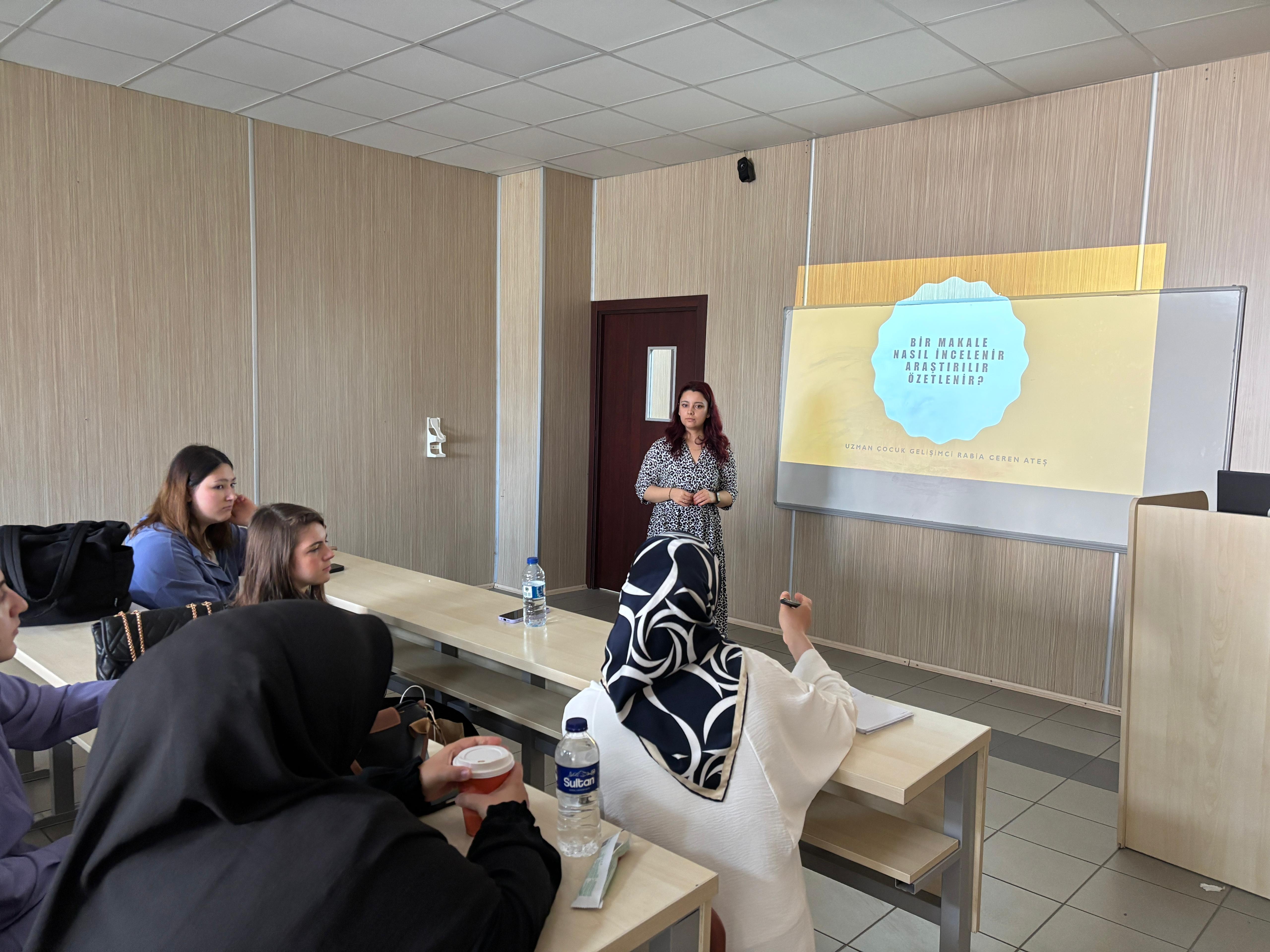The facilitator, Research Assistant Rabia Ceren ATEŞ, discussed the importance of the websites to use while searching for articles, the significance of keywords, and the process of reviewing articles in the workshop with Child Development students. The workshop then moved on to the topics “What are research methods? How to review an article? What are summarizing techniques?”. The title, keywords, abstract, and introduction of a selected article were discussed. The definitions of quantitative and qualitative research methods, as well as the research method of the selected article, were explained.
Article review is a critical evaluation of the content, method, findings, and conclusions of an academic or scientific article. In this process, the article's purpose, methods, data obtained, and how the author reached the conclusions are analyzed in detail. At the same time, the strengths and weaknesses of the study are identified, and any shortcomings or controversial points are highlighted.
When reviewing an article, the primary focus should be on understanding the main purpose of the study and its research question. To achieve this, the introduction section should be carefully read to determine what problem the author addresses and why this topic was chosen to solve it. Then, by reviewing the literature, the theoretical framework the author applied and the previous studies they relied on should be evaluated. Selecting the right article is critical for the quality and success of academic studies. The article should be relevant to your research topic and question. Focusing on a topic that interests you both increases motivation and simplifies the analysis process. When selecting an article, attention should be paid to the journal in which it was published. Articles published in peer-reviewed, respected, and indexed (e.g., Scopus, Web of Science) journals are generally scientifically reliable. Also, the publication date of the article is important; if you are interested in current topics, studies published within the last 5-10 years should be preferred. Finally, the article should be accessible and understandable.
The methodology section is crucial for the scientific validity of the study. In this section, elements such as the data collection methods, sample size, and analysis techniques used by the author should be examined. It should be questioned whether the methods used are suitable for the research question and whether they are presented clearly. While reviewing the findings section, attention should be paid to whether the data obtained answers the research questions and whether the data is presented clearly.
Research methods are generally divided into quantitative, qualitative, and mixed methods. Quantitative research methods rely on numerical data and aim to reach conclusions through statistical analysis. In this context, experimental methods investigate cause-and-effect relationships between variables through controlled experiments. Surveys and scales measure participants' views, attitudes, and behaviors using standardized questions, and the data is analyzed with statistical methods. Qualitative research methods, on the other hand, rely more on interpretation and a deep understanding of phenomena within their context. Interviews, conducted with semi-structured or open-ended questions, gather in-depth information, while observational methods allow the study of behaviors in their natural environment. Document analysis is conducted using written documents and archives, and focus group discussions gather data through discussions among multiple participants. Mixed methods combine both quantitative and qualitative data collection and analysis techniques to provide a broader, multidimensional perspective on the research.
In the results and discussion sections, the alignment of the conclusions reached by the author with the study's purpose and the contribution of these results to the literature should be evaluated. Additionally, it is important to determine whether the author's comments are objective and based on the obtained findings. The study's limitations should be stated, and recommendations for future research should be considered.
When summarizing the article, the key points obtained from this review process should be conveyed briefly and concisely. The article’s purpose, method, findings, and main results should be summarized, followed by a short evaluation of the overall success of the study. During this process, it is important to use an objective and critical tone.
At the end of the workshop, the students’ questions were answered, and positive feedback was received from the students.


